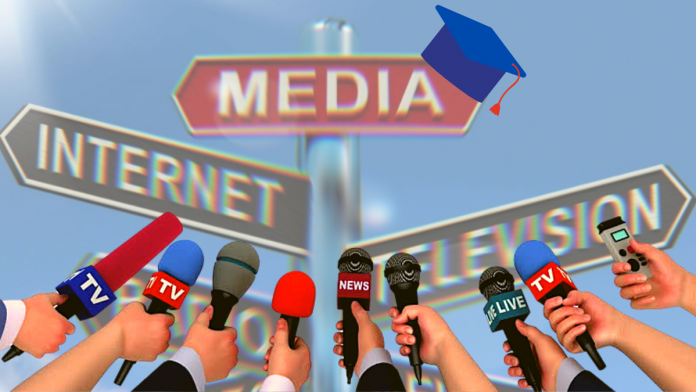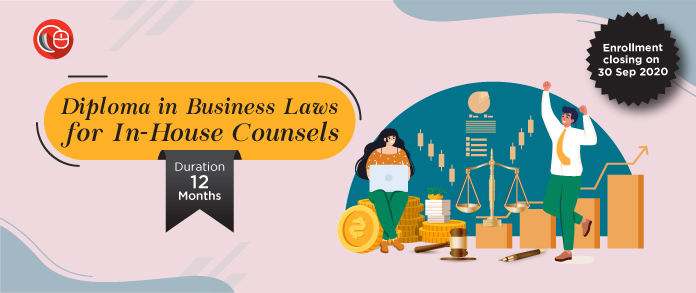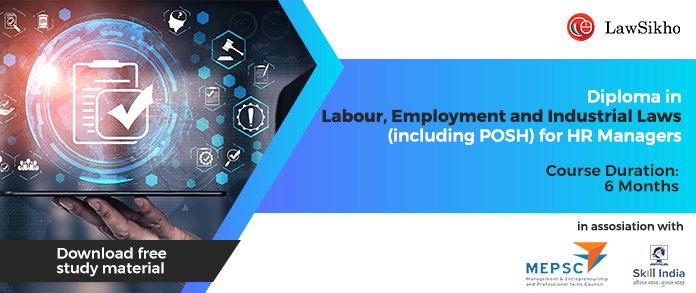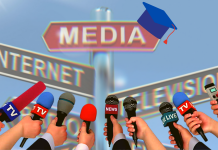This article is written by Sheroy Broacha. This article has been edited by Ojuswi (Associate, Lawsikho).
This article has been published by Sneha Mahawar.
Table of Contents
Introduction
The media plays a very pivotal role in an active democracy. Consider it such a powerful source of information that it has been tagged as the ‘fourth pillar of democracy’. Within this important and purposeful tag, lies great responsibility on part of the media. The media acts as a catalyst, as it is the direct point of contact with the public at large. Due to the immense credibility amassed over the years, a single statement flashed as ‘Breaking News’ by the digital media or print media is perceived by the general public to be cent-percent accurate. With such strong credibility and viewership, Digital Media is in such a dominating position that it can:
- Pop an Animated Disguised Statement
- Get that into the minds of the Public at Large
- Convey a particular situation with a wrong meaning
- Finally, get away with the repercussions of loose arguments
The aforesaid situation needs to be addressed with utmost urgency as its after-effects lead to either social tensions among various groups or a dignified person loses the thrust(significance)destroying his/her brand equity at large. Readers may ponder how will just one statement (or so-called marginal error by media) affect brand equity. Heard of the Domino Effect? Just create a mini spark and the entire dry fodder catches fire in no time.
Similar is the case with such catchy floating maligning headlines. The negative news pertaining to a particular individual or group of individuals spread like wildfire in the modern-day environment where social media apps are predominant.
This article will be discussing what a media trial means, its prevention & regulation, the constituents of Media Trial and Fair Trial along with suitable case laws.
What is media trial
When highly sensational or controversial cases involving big shots are decided by the courts, this broadcasting institution creates an air bubble. This is because they are well aware of the level of excitement and intensity within the general public regarding any new developments in such cases.
It is the Media that fills this void between the public-at-large and the adjudicating authority and it is their ‘one-of-a-kind’ fascinating, electrifying and thrilling plots that drive people to believe and engage in their spicy plots of virtual flavours. Now when an individual consumes such content they begin to form various perspectives solely on the basis of content served to them by these media-houses. The entire approach is carried on before the Hon’ble Court would pronounce their verdict. This entire influential process wherein the accused is portrayed as an offender is termed a Media Trial.
Media trial : a gimmick to gain TRP (Television Rating Points)
Until the charges framed against a person are proven and declared guilty by the court of law the individual remains ‘accused’ and does not become ‘criminal’. It is only the court of law or relevant authority under the statute who has the power to ultimately declare an accused person as guilty. However, in recent times it is becoming quite evident that even before the court order / adjudicating authority’s order had been pronounced- the media reaches its own ‘fairy tale conclusion’ painting the said individual/institution as a primary culprit.
The primary job of a broadcasting institution should only be to present facts to the viewers and leave it upon the viewers to decide, as per their own rational thinking, what could be the outcome of a particular situation. Although, this hasn’t been the case in recent times as the media through their famous ‘Prime-Time’ anchors have paved the way to try and fidget with public perception. The logic is quite simple- Public-at-large will enjoy something negative(added spice)rather than straightforward positive facts. This loop will lead to more views ultimately leading to high TRP.
Prevention of media trial and regulation of media
Prevention
The Law Commission in its 200th report, Trial by Media: Free Speech versus Fair Trial under Criminal Procedure(Amendments to the Contempt of Courts Act,1971), has recommended a law to debar the media from reporting anything prejudicial to the rights of the accused in criminal cases, from the time of the arrest to investigation and trial. Having a law that prevents media trials should serve as a deterrent by disbarring journalists from the profession for at least 7 years and suspending the licenses of such media houses for at least 9 years if such journalists propagate fake news or conduct such trials on air. Only when such strong attempts are made, the Media will shift its focus from “TRP-based Views” to “Factual based News”.
One such attempt was made back in 2018 wherein a Circular was issued by the Information & Broadcasting Ministry that sought to suspend/cancel the accreditation of journalists found to have propagated fake news. However, the same circular was withdrawn after the protest by Journalists. This circular was the first turtle step to curbing fake news & media trials. Had this circular been into effect as of today, who knows- by the next 5 years it would have taken the shape of legislative intent. Thus, only a separate law and strict provisions would do good to avoid such a ruckus.
Regulation
As of now, there are various laws enforced to regulate the conduct of media. Some of which are:
As per Section 13, The objects of the Council shall be to maintain and improve the standards of newspapers and news agencies in India.
According to section 14, the council may warn, admonish or censure a newspaper, news agency, editor, or journalist, or disapprove of their conduct. In the event that the newspaper or news agency has violated journalistic ethics or public taste or if an editor or working journalist has violated professional standards, the council may warn, admonish, or censure them.
Cable Television Networks (Regulation) Act,1995 & CTN Rules,1994
The CTVN rules lay down the principles of the Programme Code, which regulates the type of programs that will be broadcast. The CTVN Act empowers the authorized officer under Sections 19 and 20 to prohibit the transmission of certain programs in the public interest or the television network altogether so that such programs do not disturb public tranquillity.
As per the Cable Television Networks (Amendment) Rules, 2021 a new sub-rule [i.e, sub-rule (7)] has been inserted which states that “where the Central Government is satisfied that the programme of any channel is not in conformity with the Programme Code, it may, after giving an opportunity of hearing to the cable operator, and by an order in writing, prohibit the transmission or re-transmission of any such channel or programme in accordance with the provisions of section 20 of the Act.”
A new three-tier Complaint redressal structure has also been devised to ensure observance and adherence to the Programme Code and the Advertising Code by the broadcaster.
Actual trial vs. Media trial
Actual trial
The Actual Trial (Fair Trial) is one where the trial is not impacted & driven by external pressures. Under our Constitution, as also the international treaties and conventions, the right to get a fair & speedy trial is a basic fundamental/human right. An individual has a right to defend himself as a part of his fundamental right as enshrined under Article 14 & Article 21 of the Constitution of India.
The Principles of Natural Justice are considered a part of the guarantee contained in Article 14 and hence no one should be condemned unheard. Moreover, the requirement to give a reason in support of the decision is one of the principles of natural justice. The right to defend oneself and for that purpose to adduce evidence is recognized by the parliament in terms of sub-section (2) of section 243 of the Code of Criminal Procedure,1973.
Article 129 (Supreme court to be a court of record) and 215 (High Court to be a court of record) along with the Contempt of Courts Act,1971 contain provisions with respect to Contempt of Court that aim at safeguarding the Right of Fair Trial.
Presumption of Innocence
In the State of U.P. v. Naresh and Ors.,[ (2001) 4 SCC 324] the Supreme Court observed that “every accused is presumed to be innocent unless his guilt is proved. The presumption of innocence is a human right subject to statutory exceptions. The said principle forms the basis of criminal jurisprudence in India.”
Media trial
The fundamental role of the Media is to broadcast the authentic facts which implies that the media shouldn’t adjudicate upon any case but only publicize the factual part of the case. However, the print media and electronic media are now immersed in an unquenchable competition of TRPs (Television Rating Points). Article 19(1)(a) provides all citizens with the freedom of speech and expression. The expression ‘freedom of press’ is comprehended within this Article.
Such freedom was provided by the makers of our constitution so that everybody has the right to hold opinions without interference. However, it has been seen as of present times that the broadcasters have been making a soft misuse of this freedom by conducting media trials not adding to the strengthening of the democracy but only for TRP gimmick & maligning an individual’s brand equity.
The distortion of news is not just at the source level(news broadcasting level) but also at various intermediary levels(Individual Tweets & Youtube Channels), call them the “First-Line of Distorters”. Due to such an overload of information, people, in general, do not consider it as their duty to verify the “catchy news” and moreover believe it in its absolute sense to be true, whatsoever. So knowingly or unknowingly we(people at large)become carriers of such unsolicited news and participate in the “Second-Line of Distorters” club. The Sushant Singh death tragedy is a classic example of how ruthlessly the media conducted an Arbitrary Trial against the alleged accused and tried its best to paint Rhea as a culprit. The conspiracy theories and lurid speculations leading to the vilification of Rhea Chakraborty are not something of which one is unaware.
The media trial hampers actual trials as guilty persons are tipped off, innocent people are hounded, police investigation gets hampered and witnesses are threatened.
Case laws
Arushi-Hemraj Murder Case [9 years, 3 investigations, 2 verdicts]
This case gained a lot of media attention and was in the news for a very long time. Arushi was murdered along with her household worker Hemraj in May 2008. Initially, a lot of names occurred on the suspect list. The sensational media coverage was criticized by many as a trial by the media, which involved salacious allegations against Aarushi and suspects. The media raised questions about Arushi’s character as her affair with Hemraj, though no provident evidence had been found for the same. The media tried its best that was possible to glorify such an intense case and project it to the general public. According to the facts of the case, it was proved that there were no witnesses for the incident still, in spite of that, the public is well aware of every detail that had happened that night.
The parents were convicted for the murder and sentenced to life imprisonment in November 2013. In the Allahabad High Court, the decision was challenged by the Talwars, which later in 2017 acquitted them as giving them the benefit of the doubt and calling the evidence unsatisfactory.
Yakub Memon Case
Yakub Memon (30 July 1962 – 30 July 2015) was held to be a terrorist and on 27 July 2007, he was convicted for his involvement in the 1993 Bombay blasts by the Special Terrorist and Disruptive Activities Court. All of his petitions and appeals which demanded clemency were rejected and on 30th July 2015, he was executed by hanging in Nagpur jail.
Due to the extensive media coverage and trials, in this case, the lawyers defending the accused were heavily criticized, making it difficult for them to fulfil their ethical duty and provide legal aid. Not to be forgotten that the Right to Legal Aid is covered under Article 21 of the constitution.
Conclusion
As responsible citizens, we have the right to be informed about the various issues and events that have been taking place across the country and that responsibility lies with the media. However, where it reaches the extent to create an influence in the minds of its viewers or the readers, it becomes unjustifiable.
Addressing High-court Judges, Judicial Officers and Law Students in Ranchi Former CJI N.V. Ramana said, “Of late, we see the media running kangaroo courts, at times on issues even experienced judges find difficult to decide. Ill-informed and agenda-driven debates on issues involving justice delivery are proving to be detrimental to the health of democracy. Biased views being propagated by the media are affecting the people, weakening democracy, and harming the system. In this process, justice delivery gets adversely affected. By overstepping and breaching your responsibility, you are taking our democracy two steps backwards,”
Public-at-large gives unwanted reactions, comments and suggestions on those matters which, in its entirety, are not correct. Imagine, if such distortion is carried out to malign the image of an individual it not just hurts the person concerned but he/she unnecessarily becomes a source of mockery for the general public(experts carry out this campaign very systematically pretending themselves to be saints). So, rather than encouraging people not to do it(which is a waste of time), we should attack the roots of origination. As a result, the maligning campaigns and arbitrary media trials carried out by various intermediaries must be brought under the Legal Framework with strict penalties that have a strong after-effect so that no other individual or broadcaster dares conduct such unwanted campaigns in order to cater to views in the future.
Hence if the media is burdened with responsibility it has to use its tools responsibly.
Students of Lawsikho courses regularly produce writing assignments and work on practical exercises as a part of their coursework and develop themselves in real-life practical skills.
LawSikho has created a telegram group for exchanging legal knowledge, referrals, and various opportunities. You can click on this link and join:
Follow us on Instagram and subscribe to our YouTube channel for more amazing legal content.
 Serato DJ Crack 2025Serato DJ PRO Crack
Serato DJ Crack 2025Serato DJ PRO Crack













 Allow notifications
Allow notifications



